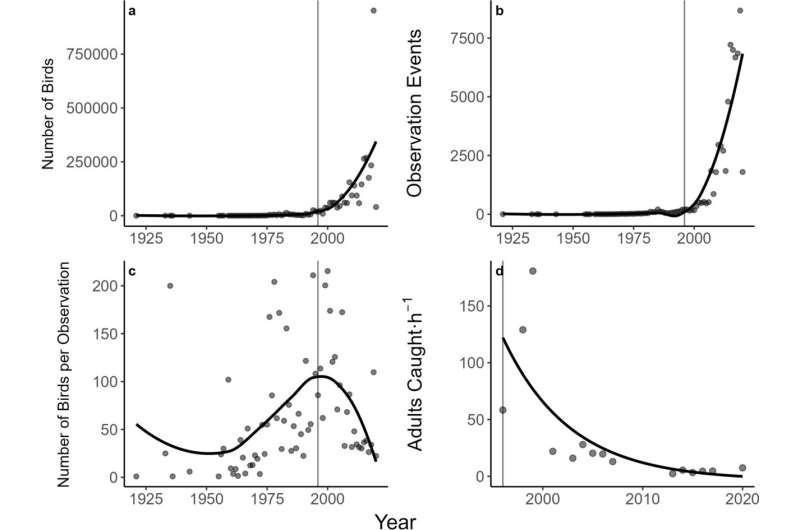This article has been reviewed according to Science X's editorial process and policies. Editors have highlighted the following attributes while ensuring the content's credibility:
fact-checked
proofread
Where have all the petrels gone? Long-term study shows 90% population decline

To understand the effects of environmental changes on seabird populations, long-term studies are essential but rare. Biologists from Germany, Poland and Argentina have compiled data on the population dynamics and breeding success of Wilson's storm petrels in Antarctica over four decades and have now analyzed them under the direction of Prof. Petra Quillfeldt, Institute of Animal Ecology and Special Zoology at Justus Liebig University Giessen (JLU).
The result: a dramatic decline in the population sizes. The results have now been published in the journal Polar Biology.
From 1978 to 2020, the research team had studied the population of Wilson's storm petrels (Oceanites oceanicus) from King George Island (South Shetland Islands, Antarctica). This region is strongly affected by climate change, in particular, winter temperatures there have already increased by more than six degrees and sea ice cover is declining sharply.
As a result, humidity increased and this leads to increased snowfall, which blocks the entrances to the nests. In some years, storm petrels have been able to breed very late, and in others, breeding adults or chicks have been trapped in their nests by snow.
Storm petrels also often found themselves short of food because their main food source, Antarctic krill, are suffering from declining sea ice. These environmental factors have a significant impact on storm petrel populations: the study found a 90 percent population decline at two colonies and considerable annual variation in breeding success and chick growth rates.
"With the expected further increase in air and ocean temperatures, we can expect a further increase in precipitation over the Antarctic Peninsula and increased frequency of snowstorms," Prof. Quillfeldt said. "In addition, rising temperatures are likely to further reduce krill availability. Current environmental changes may therefore lead to further declines in the storm petrel population, and we expect this trend to continue or even accelerate in the future."
More information: A. N. M. A. Ausems et al, Where have all the petrels gone? Forty years (1978–2020) of Wilson's Storm Petrel (Oceanites oceanicus) population dynamics at King George Island (Isla 25 de Mayo, Antarctica) in a changing climate, Polar Biology (2023). DOI: 10.1007/s00300-023-03154-4
Provided by Justus-Liebig-Universität Gießen


















